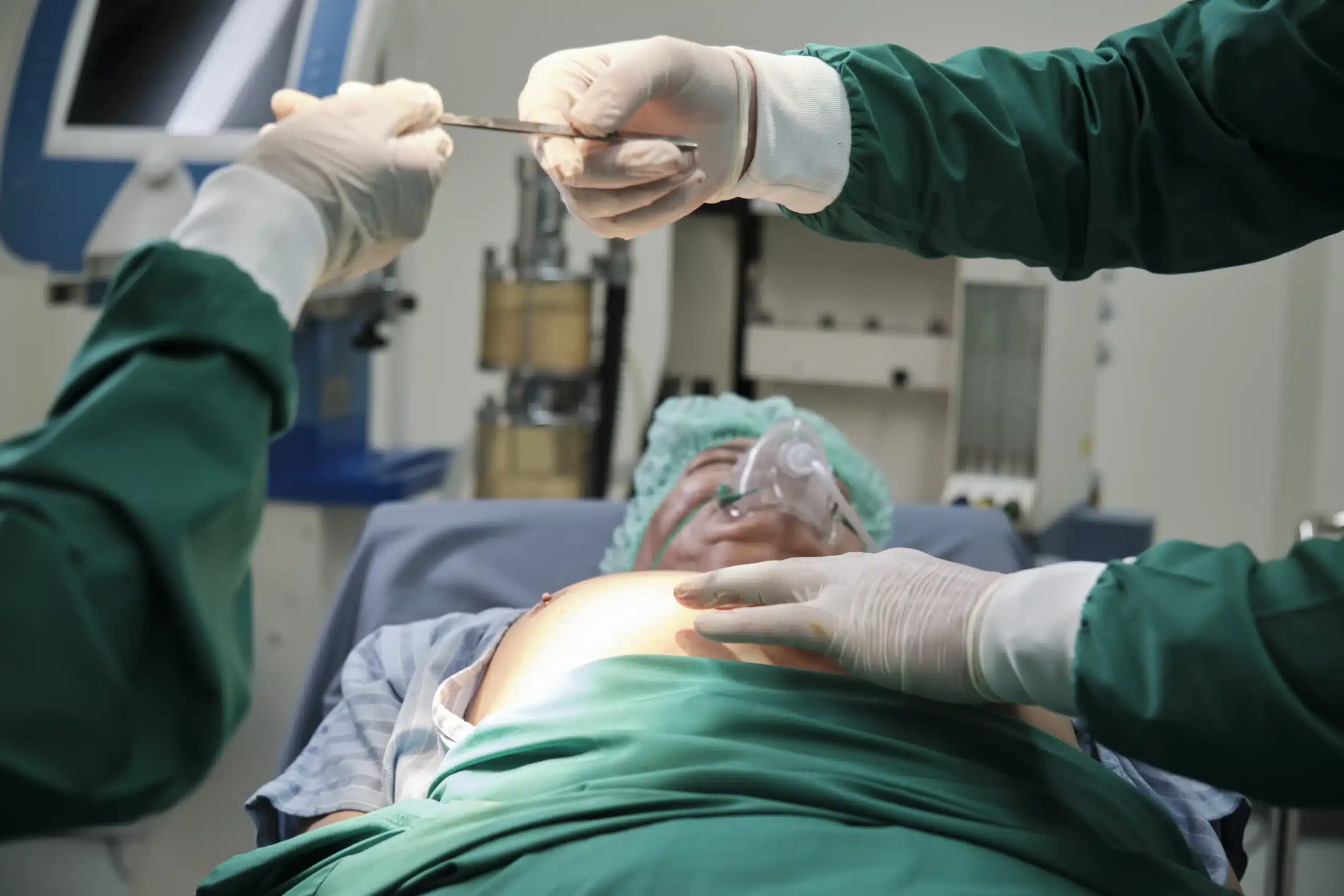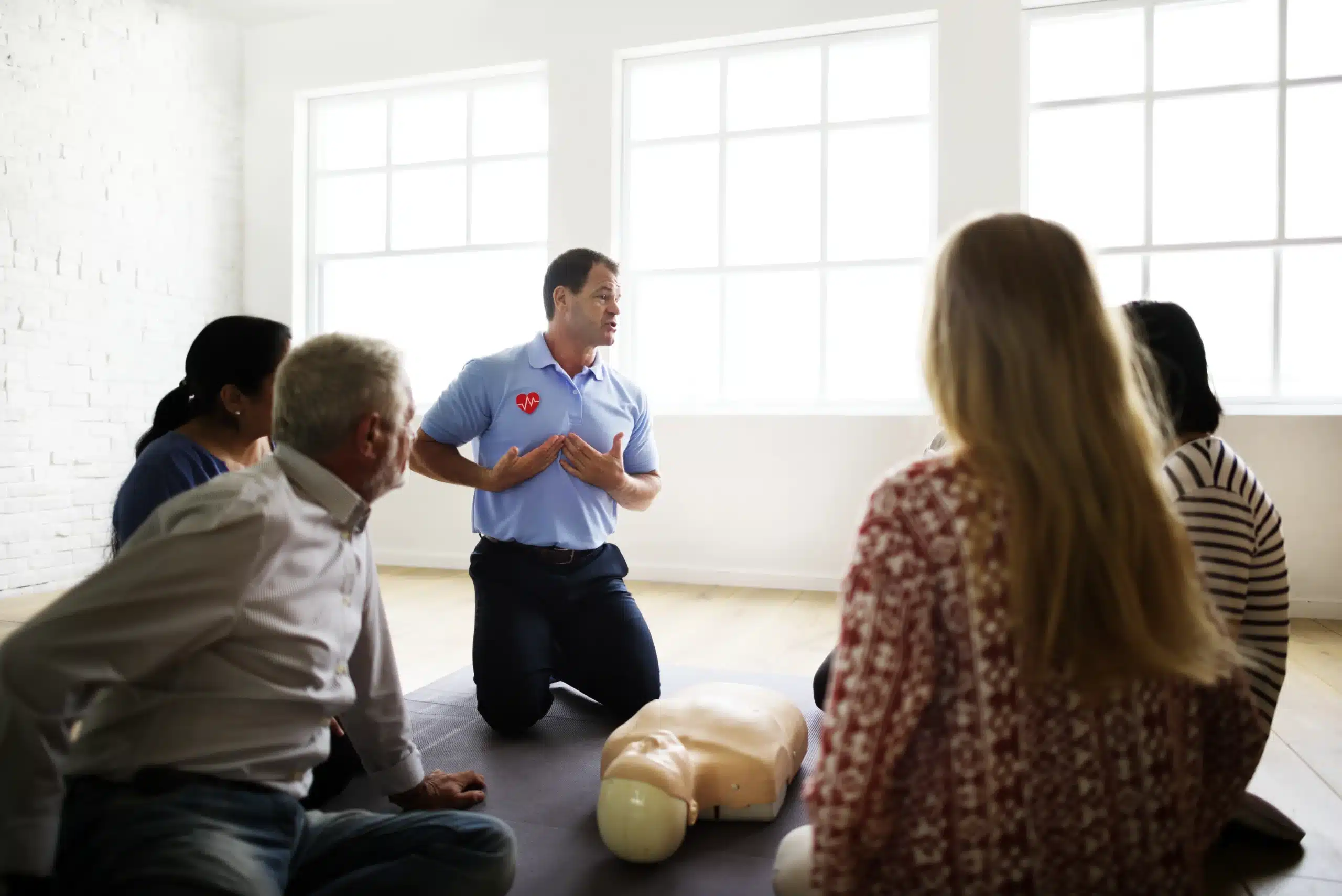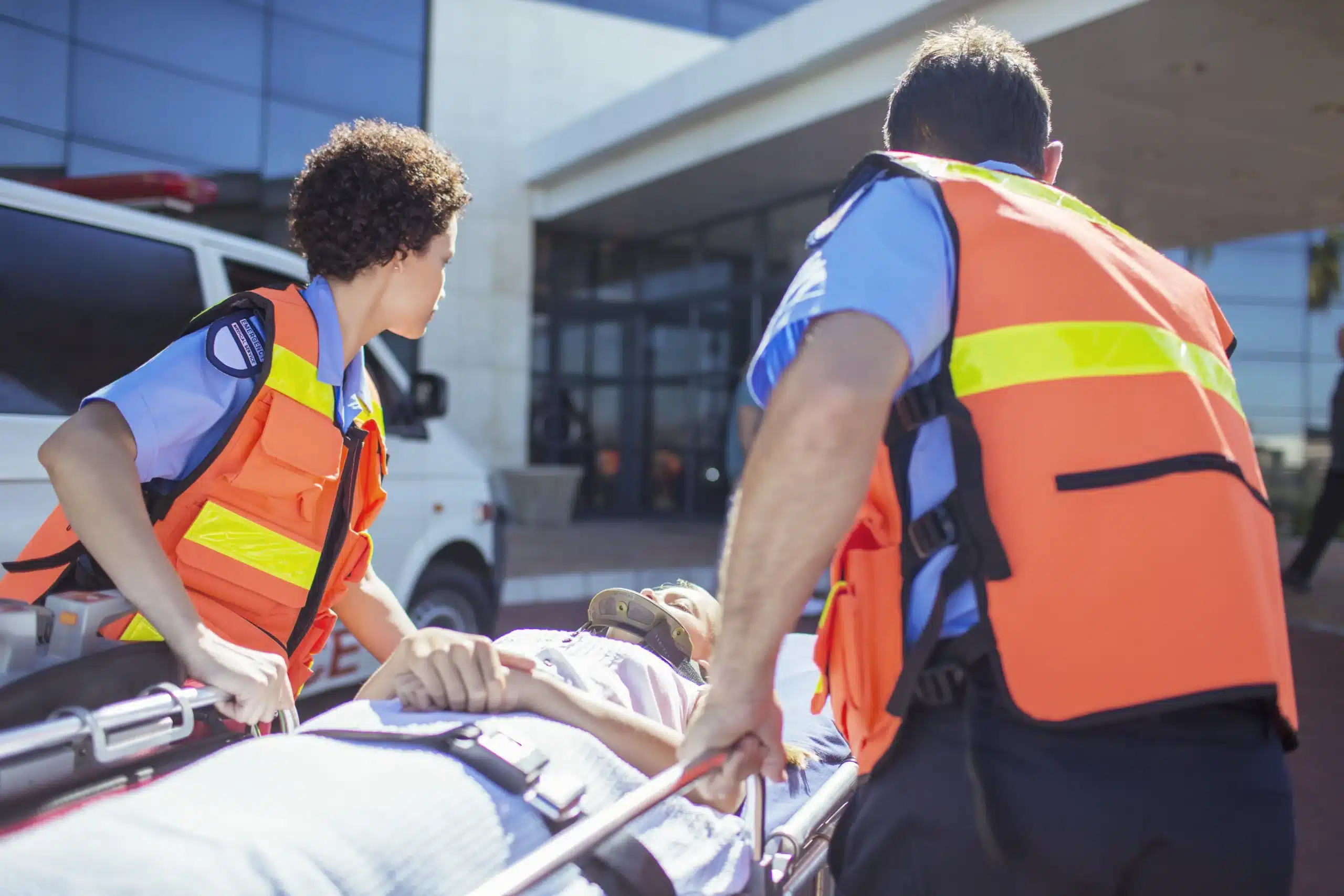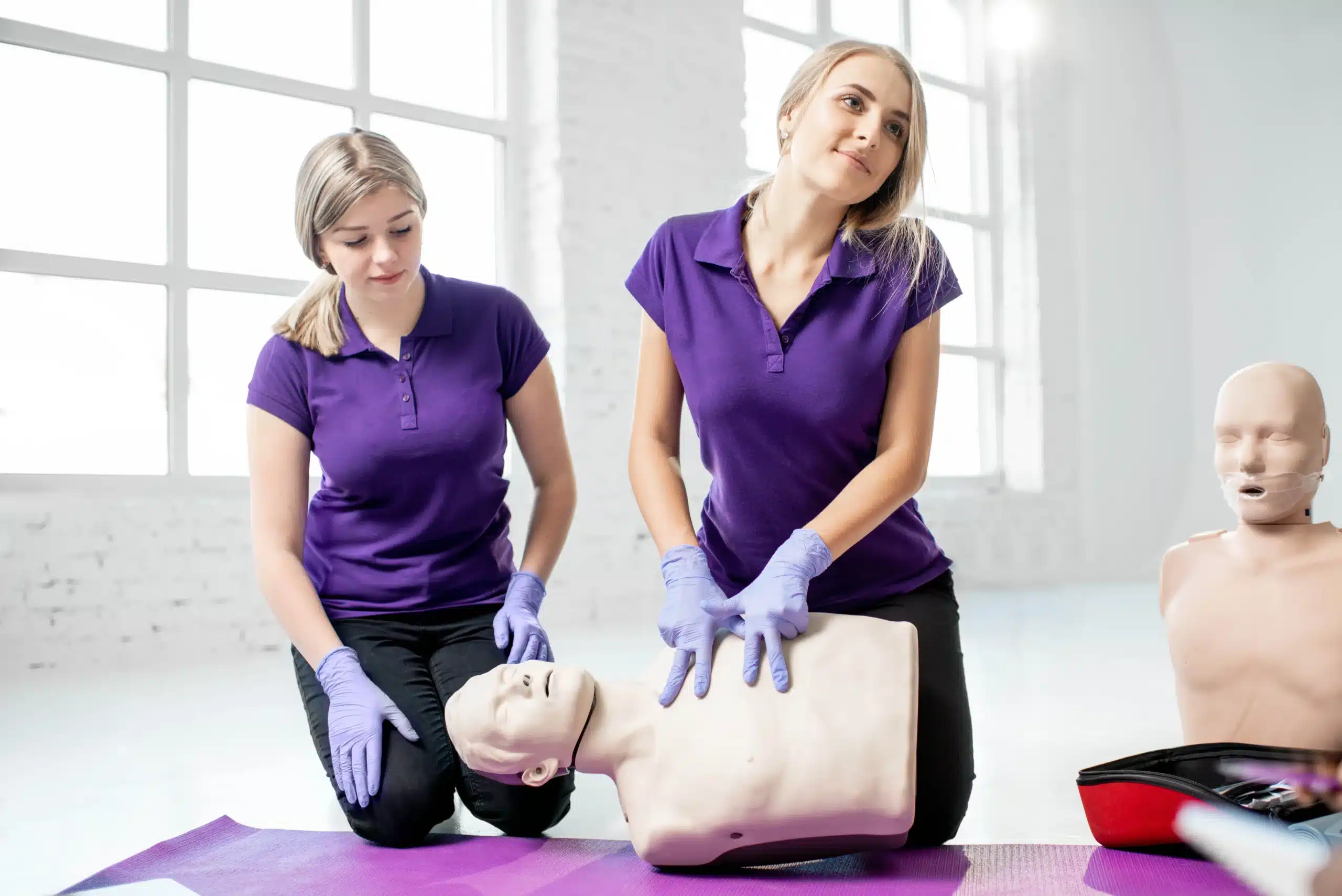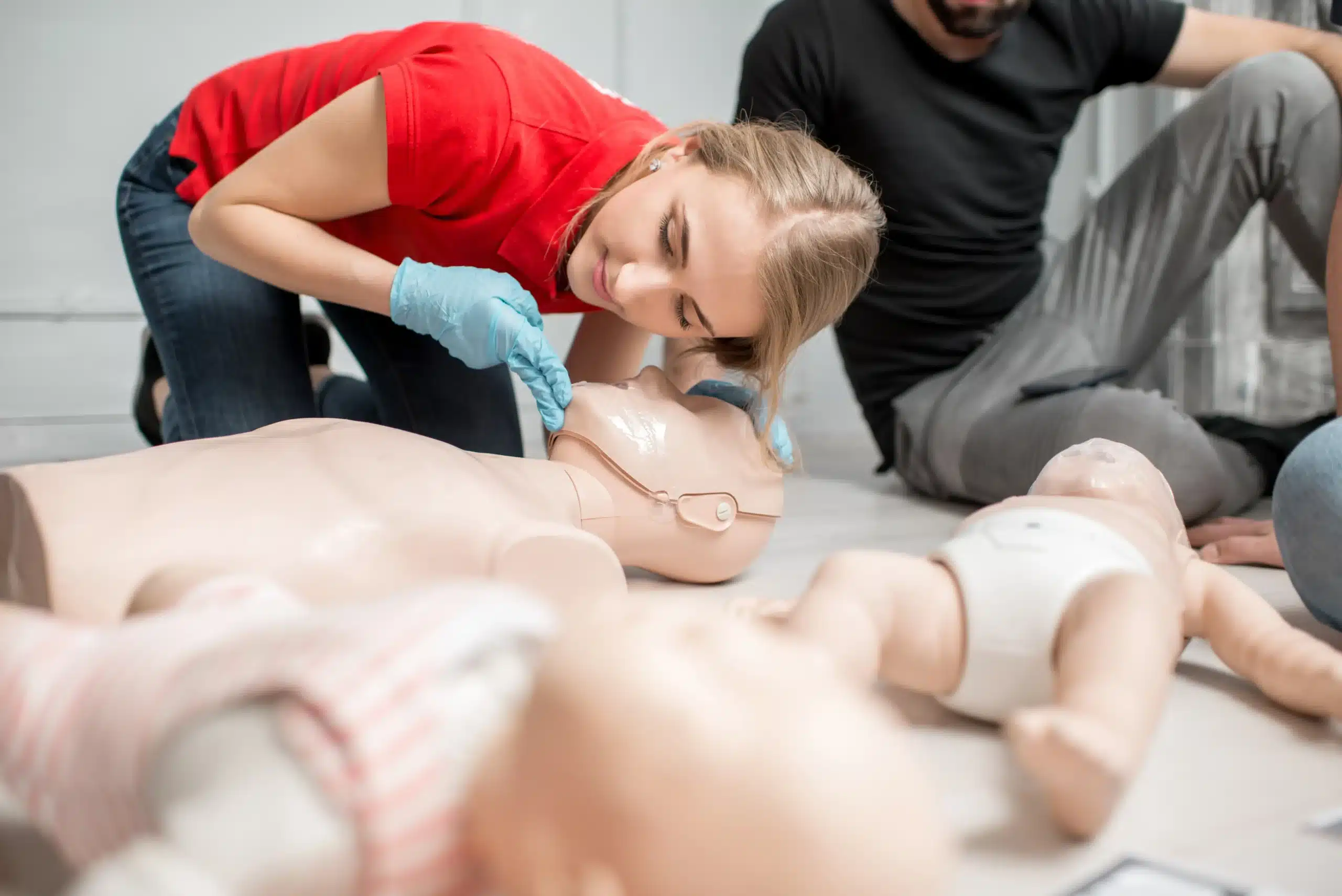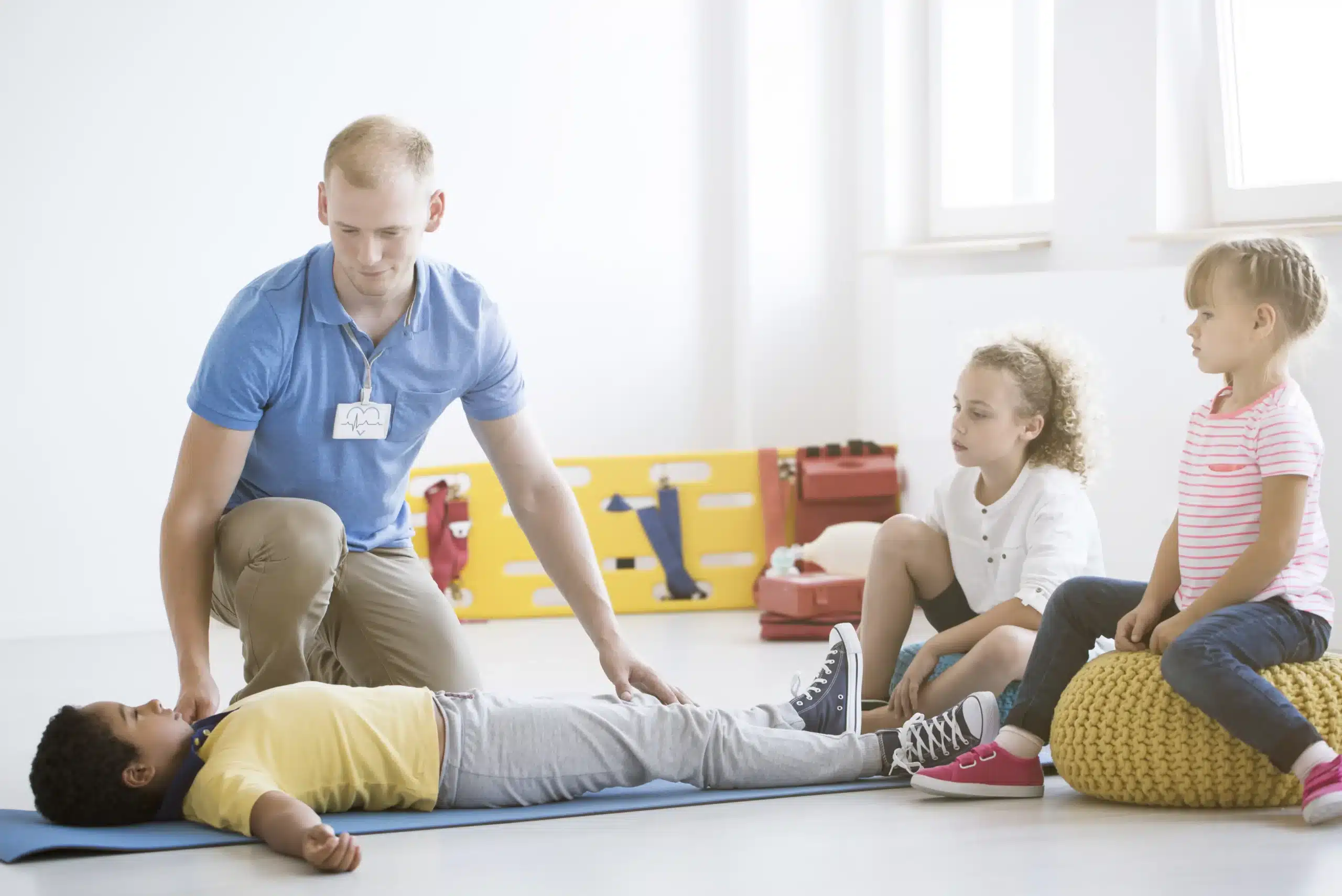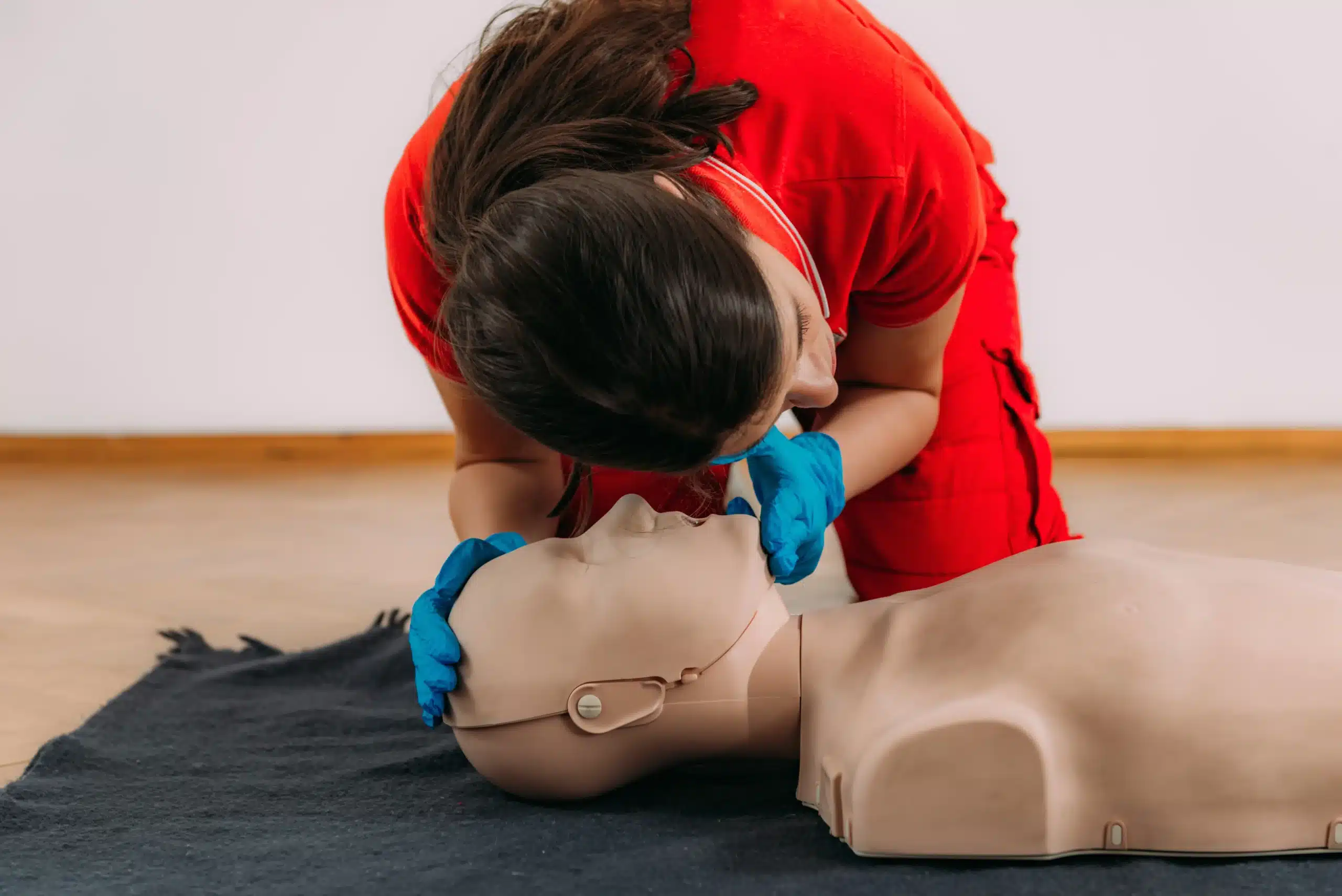Whether you’re a parent, grandparent, nanny, or childcare provider in Lodi, having pediatric CPR and first-aid training under your belt isn’t just a good idea—it’s essential. Knowing how to respond to a medical emergency involving a child can make all the difference. This article serves as your comprehensive guide to pediatric CPR and first-aid in Lodi. We’ll cover the key differences between adult and child CPR, debunk common misconceptions, and explore the various training options available in Lodi and the surrounding areas. We’ll also delve into the importance of certifications, the cost of training, and what to expect during a pediatric CPR and first-aid course.
Key Takeaways
- Pediatric CPR and first aid equip you to handle emergencies involving children. These skills empower you to provide immediate care in crucial moments before professional help arrives, potentially making a life-saving difference. Choose a course with hands-on practice and realistic scenarios for a truly effective learning experience.
- Select the right course by considering key factors. Course content, scheduling flexibility, instructor qualifications, and the availability of post-training support are all important considerations. Reach out to training providers to discuss your specific needs and find the best fit.
- Certification validates your skills and commitment to safety. Holding a recognized certification provides peace of mind and may be essential for certain professions. Verify the certification’s accreditation and keep it current through regular renewal.
What is Pediatric CPR and First Aid?
Pediatric CPR and First Aid training gives you the skills to respond to illnesses and injuries in infants and children. It focuses on those critical first few moments before professional medical help arrives. Knowing how to assess a situation, perform CPR, and administer basic first aid can dramatically improve outcomes.
Why Parents and Caregivers Need Training
For parents, grandparents, nannies, and anyone who cares for children, this training offers invaluable peace of mind. Knowing you can handle a medical emergency involving a child can make all the difference. It empowers you to protect the children in your care and respond effectively in a crisis. Childcare providers, in particular, benefit from pediatric first aid and CPR training because it helps create a safer environment. This training not only helps you respond to emergencies but also builds confidence.
Key Differences from Adult CPR
It’s important to understand that pediatric first aid isn’t the same as adult first aid. Children’s bodies are different, and they react differently to injuries and illnesses. Pediatric first aid emphasizes emotional support and reassurance, which is crucial for a frightened child (and their caregiver!). Techniques for CPR are also modified to suit a child’s smaller physique.
Common Misconceptions
Many people hesitate to learn CPR due to worries about performing it incorrectly or causing further injury. Some are also reluctant to perform mouth-to-mouth resuscitation. These are valid concerns, but a good CPR course addresses these misconceptions. It provides hands-on training and guidance so you can feel confident and prepared in a real emergency. Learning CPR is about empowering yourself to potentially save a life, and a quality course will equip you with the knowledge and skills to do so effectively.
Pediatric CPR & First Aid Courses in Lodi
Finding the right pediatric CPR and first aid course can feel overwhelming, but several excellent options are available in Lodi. Here’s a closer look at some reputable training providers:
Safety Training Seminars
Safety Training Seminars, a woman-owned American Heart Association (AHA) Training Center, offers various AHA courses, including Pediatric CPR and First Aid. They pride themselves on convenient scheduling, with classes available every day of the week in Lodi and the surrounding areas. This flexibility makes it easier for busy parents, caregivers, and professionals to fit this crucial training into their schedules. Because they are local to Stockton, they also offer a low-price guarantee for CPR, First Aid, BLS, ACLS, and PALS certification classes. Learn more about their course offerings on their website. For those seeking American Heart Association certifications, they offer BLS, ACLS, and PALS courses. They also offer an EMSA-approved Child Care Health & Safety course. See their low price guarantee.
Life First Training Center
Life First Training Center offers a specialized Heartsaver Pediatric First Aid and CPR/AED class. This course is specifically designed for individuals working with children, such as daycare providers, preschool teachers, and those involved in foster or adoptive parenting. The course is EMSA-approved, ensuring participants receive the required certification for their roles. You can find more details about this specialized training on the Life First Training Center website.
Professional CPR
Professional CPR offers a range of CPR, BLS, AED, and First Aid classes in the Lodi area. While their Stockton location, which serves Lodi, may have limited availability, they are known for providing instruction from local first responders and educators. This focus ensures participants receive practical, real-world training. Check their website for the latest course availability and schedules.
MABPRO
MABPRO provides an EMSA Pediatric CPR/AED & First Aid Training course covering essential skills for responding to both adult and pediatric emergencies. This comprehensive approach helps build student confidence in handling various situations. If you’re looking for a well-rounded course that prepares you for a wider range of emergencies, explore the details on the MABPRO website.
What Happens in a Pediatric CPR & First Aid Course?
Knowing what to expect can ease any worries you might have about taking a pediatric CPR and first aid course. These courses blend practical skills with essential knowledge, empowering you to confidently handle emergencies involving children.
Essential Skills You’ll Learn
Pediatric CPR and first aid courses cover a range of life-saving techniques specifically designed for infants and children. You’ll learn how to recognize the signs of a medical emergency, including choking, cardiac arrest, and breathing difficulties. The course will teach you how to perform CPR on infants and children, and how to use an AED if necessary. Beyond CPR, you’ll gain practical first aid skills to address common childhood injuries like cuts, burns, and allergic reactions. These courses often incorporate the latest guidelines from organizations like the American Heart Association, ensuring you receive up-to-date training. Our BLS course covers these essential skills.
Hands-on Practice and Scenarios
A significant part of pediatric CPR and first aid training involves hands-on practice. You’ll work with mannequins designed for infant and child CPR, allowing you to develop the muscle memory and coordination needed to perform compressions and rescue breaths effectively. Many courses also incorporate realistic scenarios, simulating various emergencies. This immersive experience helps you apply your knowledge under pressure and build confidence in your ability to respond quickly and efficiently. This practical approach ensures you’re not just learning the steps but truly understanding how to provide basic life support. Our PALS course offers more information on advanced life support techniques.
Course Length and Format
Pediatric CPR and first aid courses are designed to be comprehensive yet manageable. Many courses use a blended learning format, combining online instruction with in-person skills sessions. This allows for flexibility, letting you complete the online portion at your own pace before attending a shorter, hands-on session for practical training and assessment. A typical structure might involve a four-hour online module followed by a 30-minute in-person skills check, ensuring you grasp the core concepts and can demonstrate proper technique. Our registration process makes it easy to find a course that fits your schedule.
Provided Resources
Along with the training itself, you’ll receive valuable resources to reinforce your learning. This might include access to online materials, quick reference guides, and videos demonstrating key techniques. Some courses, like our EMSA Child Care Health & Safety course, align with specific regulatory requirements for childcare providers and offer specialized resources. These resources can serve as a helpful refresher after your course, ensuring you retain the essential skills and knowledge to provide effective care in emergencies. We also offer a low price guarantee, making quality training accessible.
Certifications: Why They Matter
As a parent, caregiver, or professional working with children, holding a valid pediatric CPR and first aid certification is more than just a piece of paper—it’s proof of your preparedness and commitment to child safety. It signifies you have the knowledge and skills to respond effectively in a crisis, potentially saving a life. This section explores the different types of certifications, their validity, and the numerous benefits they offer.
Types of Certifications
Several recognized organizations offer pediatric CPR and first aid certifications. Understanding the distinctions can help you choose the right course. Common certifications include those from the American Heart Association (AHA) and the American Red Cross. The AHA offers courses like the Heartsaver Pediatric First Aid CPR AED, designed for anyone involved in childcare. These courses cover essential life-saving techniques specifically for infants and children. Other certifications, such as those approved by the Emergency Medical Services Authority (EMSA), may be required for specific professions, like childcare providers in California. Safety Training Seminars offers the EMSA-approved Child Care Health & Safety course to meet this requirement.
Validity and Recognition
The validity and recognition of your certification are crucial, especially if it’s a job requirement. Ensure your chosen course aligns with any state regulations or employer mandates. For instance, California childcare providers need EMSA-approved certification. A nationally recognized certification, like those from the AHA, is often accepted across various states and professions. Always verify the certification’s accreditation and expiration date to maintain its validity. Regular renewal ensures your skills remain current and you’re prepared to respond confidently in an emergency.
Professional and Personal Benefits
Earning a pediatric CPR and first aid certification offers several professional and personal advantages. Professionally, it can enhance your resume, demonstrating your commitment to safety and potentially opening doors to jobs in childcare, education, and healthcare. Personally, it provides invaluable peace of mind, knowing you can act quickly and effectively if a child in your care experiences a medical emergency. This confidence extends beyond the professional sphere, empowering you to respond to emergencies involving children within your family, neighborhood, or community. It transforms you from a bystander into a potential lifesaver, equipped to handle situations ranging from minor injuries to life-threatening events.
Cost & Value of Pediatric CPR in Lodi
Knowing the cost of pediatric CPR and first aid training and understanding its long-term value are important factors when choosing a course. Let’s break down pricing, potential discounts, and why this training is a worthwhile investment.
Pricing and Payment
Pediatric CPR and first aid training courses in Lodi vary in price depending on the provider and the type of certification offered. You can expect to find courses like MABPRO’s EMSA Pediatric CPR/AED & First Aid training for around $65. Many providers offer various payment options, making it easier to fit this essential training into your budget. Contacting providers directly is always a good idea, especially if you have questions about specific course costs or payment plans. Some, like Professional CPR, encourage you to reach out if you’re unsure which class best suits your needs.
Discounts and Early Bird Savings
Keep an eye out for discounts! Some training centers offer early bird pricing or group discounts, especially for businesses or organizations with multiple participants. Check each provider’s website or give them a call to inquire about potential savings. Professional CPR also offers on-site training, which can be a cost-effective option for larger groups in Lodi. Checking the provider’s online calendar can help you find available classes and potentially discover any upcoming discounts.
Long-Term Value
While there’s certainly a monetary investment involved, consider the invaluable skills and confidence you’ll gain. Knowing how to respond to a pediatric emergency can make a profound difference in a child’s life. Think of it as an investment in peace of mind, knowing you’re prepared to act quickly and effectively if a child in your care needs help. This training equips you with essential skills and empowers you to create a safer environment for children. The ability to respond confidently in a crisis is a skill that will stay with you for a lifetime. For childcare providers, training like this can also fulfill important legal requirements.
Instructor Qualifications & Emergency Plans
When choosing a Pediatric CPR and First Aid course, the instructor’s qualifications and the availability of emergency plans are essential factors. These elements significantly impact the quality of your training and your preparedness for real-life situations.
Instructor Certifications & Backgrounds
Look for instructors certified by reputable organizations like the American Heart Association or the American Red Cross. These certifications ensure instructors have met specific training standards and possess up-to-date knowledge. Ideally, your instructor should also have a background in healthcare or emergency response. Practical experience adds a valuable layer to their teaching, allowing them to share real-world insights and answer your questions effectively. For example, courses like the Heartsaver Pediatric First Aid CPR AED class are specifically designed for those working with children, highlighting the need for specialized instructor training.
Ongoing Instructor Education
Medicine is constantly evolving, so it’s crucial to ensure your instructor participates in continuing education. This commitment to staying current with the latest guidelines and best practices ensures you receive the most accurate and effective training. Look for providers, like MABPRO, who prioritize adherence to OSHA compliance and up-to-date guidelines. This ongoing education translates to a higher quality learning experience for you.
Create Comprehensive Emergency Plans
Beyond individual training, establishing comprehensive emergency plans is paramount, especially for childcare providers. Emergency preparedness is a process of planning for various scenarios to ensure a safe environment before, during, and after an emergency. Resources like the Provider Toolkit offer valuable tools and templates for developing these plans, including risk assessments, supply checklists, and specific procedures for childcare centers. Having a well-defined plan empowers you to respond confidently and effectively in a crisis.
Choose the Right Training in Lodi
Finding the right pediatric CPR and first aid training in Lodi means doing a little homework. It’s more than just picking the first class you see; it’s about finding the best fit for your needs and schedule. Here’s what to consider:
Compare Course Content
Not all courses are created equal. Some programs, like the Heartsaver® Pediatric First Aid CPR AED course, focus specifically on children. These courses cover the skills you’ll need if you work with kids or are involved in foster or adoptive parenting. Other programs, such as MABPRO’s EMSA Pediatric CPR/AED & First Aid Training, offer a broader approach, including training for adults, children, and infants. Take a look at the course descriptions and choose the one that aligns with your specific requirements. If you’re unsure, a quick call to the training center can help clarify any questions. We offer a range of courses at our Stockton location designed to meet diverse needs.
Scheduling and Flexibility
Life gets busy, so finding a class that works with your schedule is essential. Currently, in-person classes specifically in Lodi might be limited, with training often provided through our convenient Stockton location. Check our online calendar for the latest availability and upcoming courses. Some providers, like MABPRO, offer a flexible approach where you can schedule your in-person skills check first and then complete the online portion of the training at your own pace. This can be a great option for those juggling multiple commitments. We understand the demands of a busy schedule and strive to offer flexible options.
Post-Training Support
Think about what happens after the training. Your certification card will likely be valid for two years (like the Heartsaver® Pediatric First Aid CPR AED card), but staying sharp on your skills is crucial. Look for programs that offer refresher courses or resources for continued learning. The Infant CPR Anytime® program is a great example, providing self-directed instruction for parents and caregivers. At Safety Training Seminars, we emphasize the importance of ongoing practice and can provide resources to help you maintain your skills.
Reviews and Testimonials
Finally, see what other people are saying. Reading reviews and testimonials, especially from parents and childcare providers, can give you valuable insights into a program’s effectiveness. Many people share how pediatric first aid training has given them the confidence to handle emergencies involving children. Articles like this one highlight the importance of this training for childcare professionals. Do some digging and see what resonates with you. Choosing the right training can make all the difference. We encourage you to explore our testimonials and see how our training has benefited others in the community.
Related Articles
- Pediatric CPR & First Aid Training in Stockton – Stockton CPR Classes
- Pediatric CPR & First-Aid Classes in Tracy – Stockton CPR Classes
- Debunking Common CPR Myths
- Online CPR Classes in Lodi: Your Complete Guide – Stockton CPR Classes
- Why Every Workplace Needs CPR and First-Aid Training
Frequently Asked Questions
Is pediatric CPR significantly different from adult CPR? Yes, there are key differences. A child’s physiology is different from an adult’s, requiring modifications in CPR techniques. Pediatric CPR also emphasizes emotional support and reassurance, which is crucial for a frightened child. A quality training course will cover these distinctions in detail.
What if I’m worried I’ll do something wrong during a real emergency? It’s natural to feel apprehensive, but a good pediatric CPR and first aid course addresses these concerns. Hands-on practice with mannequins and realistic scenarios helps build confidence and prepares you to respond effectively under pressure.
How long does it take to get certified in pediatric CPR and first aid? Many courses now offer blended learning, combining online modules with shorter in-person skills sessions. This flexible format allows you to complete the online portion at your own pace, often followed by a brief in-person skills check. The total time commitment can vary, but many courses can be completed within a day.
Which certification is best for me? The best certification depends on your specific needs. If you’re a childcare provider in California, you’ll need an EMSA-approved certification. For other professions or personal use, certifications from organizations like the American Heart Association are widely recognized. Check with your employer or state regulations to confirm specific requirements.
How much does a pediatric CPR and first aid course cost in Lodi? Prices vary depending on the provider and type of certification. Look for potential discounts, such as early bird pricing or group rates. While cost is a factor, consider the long-term value of this training – the confidence and skills you gain are a worthwhile investment in the safety and well-being of children in your care.
